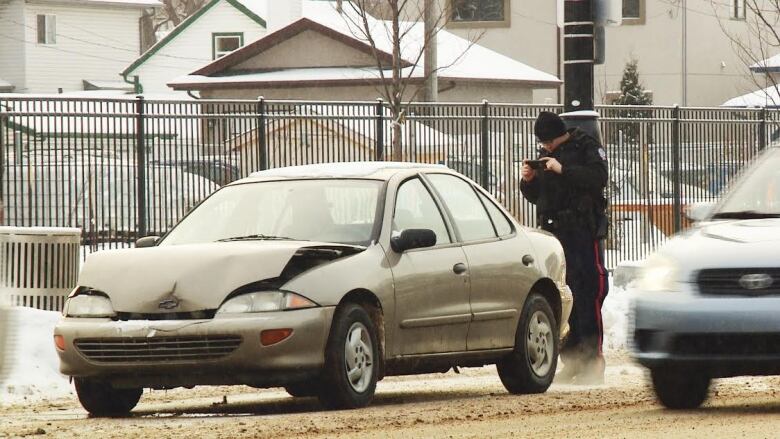Council candidate calls for freeze of photo radar program
Little correlation between collision locations and photo radar deployment, says Tricia Velthuizen

The City of Edmonton should "freeze" the photo radar program and re-evaluate its use, says Ward 4 council candidate Tricia Velthuizen.
"There's very little relationship between where we're putting photo radar and where people are involved in accidents," Velthuizen said Tuesday."I think that is completely contradictory to what the city has been telling us for years, that it's all about safety.
"The data I havesays it's not."
- Photo radar revenue down by $3 million as city drivers get the message
- Tailgating top reason for traffic crashes in Edmonton
- Edmonton Votes 2017: Learn about all 12 wards here
Velthuizen is on leave from her job as a research analyst with the United Conservative Party to run in the Oct. 16 municipal election.
She cited documents from the city that she obtained through a freedom of information request made in June.
The documents include data on the top 50 locations in Edmonton where photo radar has been deployed between 2013 and 2017.There is also data on the top 50 locations where mid-block and intersection collisions occurred during the same period.
Small overlap in collision, radar locations
Velthuizen said that in herreview of the documents, shefound only asmall percentage of the collision locations overlap with photo radar deployment locations.
For example, she said, the intersection of 149thStreet and Yellowhead Trail is listed in the collision data but not in the photo-radar locations.
"It's one of the top two collision locations in the city and it's completely unaddressed in the top 50 for deployment of photo radar, year over year," she said.

Gerry Shimko, executive director of the city's Office of Traffic Safety, said provincial guidelines dictate where photo radar enforcement can be located. The locations are also vetted by the Edmonton Police Service, Shimko said.
Without an opportunity to review the data cited by Velthuizen, Shimko said he can't comment on the specific concern she has raised.
Photo radar is used as part of the city's traffic safety education program,along with digital signs indicating a driver's speed, and community signs, he said.
Will2017 election change Edmonton politics, for now mostly white and male?
Can Don Koziakmake it a race for the mayor's chair in Edmonton?
'She just threatened to knock me out': Mayoral forum opens with 'Sweetie' spat
'She just threatened to knock me out': Mayoral forum opens with 'Sweetie' spat
"At the end of the day, my measurement is looking at the past 10years we've had a 60-per-cent reduction in injury crashes in Edmonton," said Shimko.
"[In]2006 we were the worst city in the country. We're nowhere close to that now."
European countries such as Sweden and Belgium, withtop traffic safety records, use automated enforcement, he added.
Program evaluated by U of A
Velthuizen said the photo radar program needs to be put on hold, investigated and re-evaluated.
"Let's put a freeze on, let's look at the data, let's analyze it, let's plan accordingly, and then let's restart it in a way that is actually about safety," she said.
Shimko said the photo radar program has been evaluated by the University of Alberta traffic safety research chair, and that information is available for review.
"It is reducing crashes," said Shimko. "More specifically, crashes related to speed, and that's really what automated enforcement is doing."
In May, the provincial government initiated a review of photo radar deployment.
"From our perspective, and I do believe this, Edmonton has one of the highest standards for use of automated enforcement," said Shimko.












_(720p).jpg)


 OFFICIAL HD MUSIC VIDEO.jpg)
.jpg)



























































































